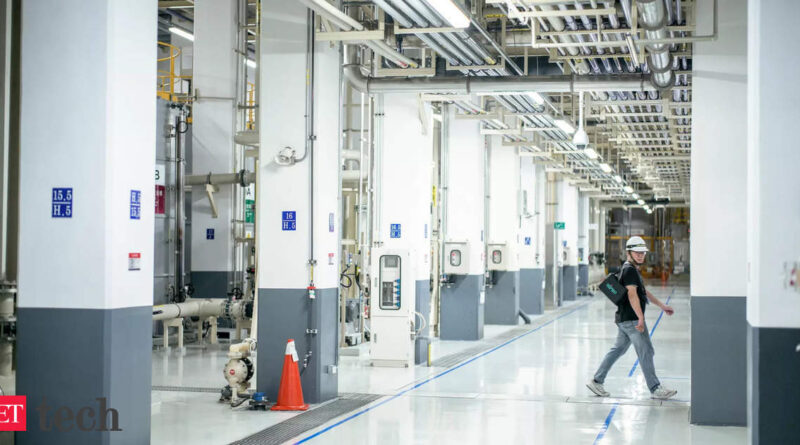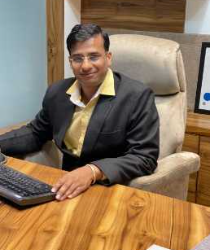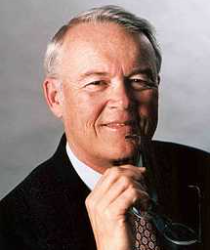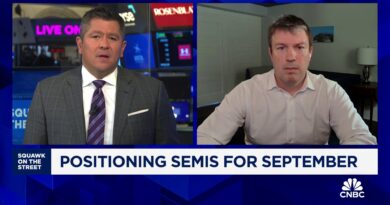Behind OpenAI’s audacious plan to make AI flow like electricity
In meetings with investors in the United Arab Emirates, computer chip makers in Asia and officials in Washington, he proposed that they unite on a multitrillion-dollar effort to erect new computer chip factories and data centers across the globe, including in the Middle East. Though some participants and regulators balked at parts of the plan, the talks have continued and expanded into Europe and Canada.
OpenAI’s blueprint for the world’s technology future, which was described to The New York Times by nine people close to the company’s discussions, would create countless data centers providing a global reservoir of computing power dedicated to building the next generation of AI.
As far-fetched as it may have seemed, Altman’s campaign showed how in just a few years he has become one of the world’s most influential tech executives, able in a span of weeks to gain an audience with Middle Eastern money, Asian manufacturing giants and top U.S. regulators.
It was also a demonstration of the tech industry’s determination to accelerate the development of a technology it claims could be as transformative as the Industrial Revolution.
When word leaked that Altman, 39, was looking for trillions of dollars, he was mocked for seeking investments equivalent to roughly a quarter of the annual economic output of the United States. Officials in Washington also expressed concerns that a U.S. company was trying to build vital technology in the Middle East. To build AI infrastructure in a number of countries, U.S. companies would need approval from U.S. officials who oversee export controls.
Discover the stories of your interest
-

Blockchain
5 Stories
-

Cyber-safety
7 Stories
-

Fintech
9 Stories
-

E-comm
9 Stories
-

ML
8 Stories
-

Edtech
6 Stories

Altman has since scaled his ambition down to hundreds of billions of dollars, the nine people said, and hatched a new strategy: Court U.S. government officials by first helping to build data centers in the United States.
It is still unclear how all this would work. OpenAI has tried to assemble a loose federation of companies, including data center builders like Microsoft as well as investors and chipmakers. But the particulars of who would pay the money, who would get it and what they would even build are hazy.
At the same time, OpenAI has been in separate talks to raise $6.5 billion to support its own business, a deal that would value the startup at $150 billion. The UAE’s technology investment firm, MGX, is among the group of potential investors, which also includes Microsoft, Nvidia, Apple and Tiger Global, three people familiar with the conversations said.
OpenAI is seeking cash because its costs far outpace its revenue, the three people said. It annually collects more than $3 billion in sales while spending about $7 billion.
Some of OpenAI’s plans have been previously reported by Bloomberg, The Wall Street Journal and Reuters. Conversations with the nine people close to the talks, who requested anonymity because they are not authorized to speak to the media, provide a fuller picture of the efforts and how the strategy has evolved.
(The Times sued OpenAI and Microsoft in December for copyright infringement of news content related to AI systems.)
In private conversations, Altman has compared the world’s data centers with electricity, according to three people close to the discussions. As the availability of electricity became more widespread, people found better ways of using it. Altman hoped to do the same with data centers and eventually make AI technologies flow like electricity.
Chatbots like OpenAI’s ChatGPT learn their skills by analyzing troves of digital data. But there is a shortage of the chips and data centers that drive this process. If that supply grows, OpenAI believes it can build more powerful AI systems.
In dozens of meetings, OpenAI executives have prodded tech companies and investors to expand global computing power, the nine people close to the company’s discussions said.
“Sam is thinking about how OpenAI remains relevant,” said Daniel Newman, CEO of the Futurum Group, a tech research firm. “It needs more compute, more connectivity, more power.”
Altman’s original plan called for the UAE to fund the construction of multiple chipmaking plants, which can cost as much as $43 billion each. The plan would reduce chip manufacturing costs for companies like Taiwan Semiconductor Manufacturing Co., the world’s largest chip producer.
TSMC makes semiconductors for Nvidia, the leading developer of AI chips. The plan would allow Nvidia to churn out more chips. OpenAI and other companies would use those chips in more AI data centers.
Altman and his colleagues discussed building the data centers in the UAE, a nation with excess electrical power. In the United States, it has been hard for companies to build new data centers because there is not enough electrical power to run them.
OpenAI discussed funding the infrastructure plan with MGX, an AI-focused investment vehicle created by the UAE. It also met with TSMC, Nvidia and another chip company, Samsung.
Omar Sultan Al Olama, the UAE’s minister of state for AI, told the Times in a March interview that there “is a business case” for going after such a giant deal.
Nvidia declined to comment. MGX and Samsung did not respond to requests for comment.
OpenAI said in a statement that it was focused on building infrastructure in the United States “with the goals of ensuring the U.S. remains the global leader in innovation, driving re-industrialization across the country and ensuring AI’s benefits are widely accessible.”
Will Moss, a spokesperson for TSMC, said the company was open to discussions about expanding semiconductor development but was concentrating on its current global expansion projects and had “no new investment plans to disclose at this time.”
When Altman visited TSMC’s headquarters in Taiwan shortly after he started his fundraising effort, he told its executives that it would take $7 trillion and many years to build 36 semiconductor plants and additional data centers to fulfill his vision, two people briefed on the conversation said. It was his first visit to one of the multibillion-dollar plants.
TSMC’s executives found the idea so absurd that they took to calling Altman a “podcasting bro,” one of these people said. Adding just a few more chipmaking plants, much less 36, was incredibly risky because of the money involved.
“We are not, nor have we ever been considering multitrillion-dollar projects. While the total investment needed for the global infrastructure of AI to be fully built out by everyone could cost trillions over several decades, what OpenAI is specifically exploring is on the scale of hundreds of billions,” said Liz Bourgeois, an OpenAI spokesperson.
Around the same time, Altman visited South Korea and held talks with two chipmakers in the country: Samsung and SK Hynix. But he soon ran into national security concerns over a prominent role for the UAE in developing a technology that many consider critical to the economy and warfare.
Some White House officials and congressional leaders are afraid that approving the infrastructure to be built in the UAE could give China a back door to important technologies. National security researchers have found evidence that some UAE universities have worked with Chinese universities with ties to Beijing’s military, said Sihao Huang, a technology fellow at the RAND Corp.
Talks with the Department of Commerce, the UAE and chipmakers are continuing. OpenAI has also expanded its discussions into other parts of the world, according to four people familiar with those talks.
In the spring, company executives held meetings with Japanese officials in Tokyo. They laid out a plan for building data centers powered by electricity from nuclear power plants that were decommissioned after the Fukushima disaster in 2011.
During one meeting, a Japanese official laughed when OpenAI said it was seeking 5 gigawatts of electrical power, about a thousand times the power that an average data center consumes, a person familiar with the meeting said.
Later, in meetings with officials in Germany, OpenAI explored building a data center in the North Sea so it could tap into 7 gigawatts of power from offshore wind turbines, the person said.
But political pressures have forced OpenAI to explore options in the United States. During a White House meeting with other tech leaders this month, Altman presented an OpenAI study called “Infrastructure Is Destiny.”
The study called for new data centers in the United States, two people familiar with the meeting said. Built at a cost of $100 billion each — about 20 times the cost of today’s most powerful data centers — they would hold 2 million AI chips and consume 5 gigawatts of electricity.
As he spoke, Altman sat in front of a portrait of President Franklin D. Roosevelt, who poured money into massive infrastructure projects like New York’s Lincoln Tunnel, two people familiar with the discussion said. The OpenAI chief told White House officials — including Commerce Secretary Gina Raimondo and Jake Sullivan, the national security adviser — that AI data centers would be a catalyst for the re-industrialization of America, creating as many as 500,000 jobs.
Altman also warned that the United States risked falling behind China and that if the United States did not work with the UAE, China would instead.
This week, President Joe Biden and Sheikh Mohammed bin Zayed, the UAE president, met at the White House and directed their senior officials to develop a memorandum detailing future collaboration on AI.
To bolster its efforts, OpenAI has hired Chris Lehane, a Clinton White House lawyer, as its vice president of global policy, along with two people from the Commerce Department who worked on the CHIPS Act, a bipartisan law designed to increase domestic chip manufacturing. One of them will manage future infrastructure projects and policy.
Speaking last week at an investor event for T-Mobile, which is a customer of OpenAI, Altman struck a modest tone about the company’s ambitions.
“We build on a gigantic amount of work that has come before us,” he said. “If you think about all that had to happen throughout human history to discover semiconductors and build chips and networks and these massive data centers, we’re just doing our one little bit on the very top of that.”




























